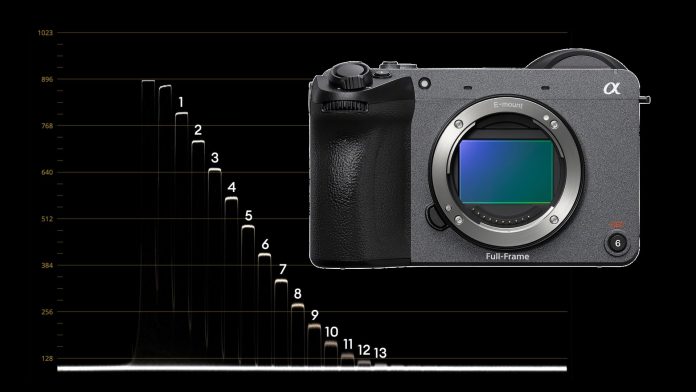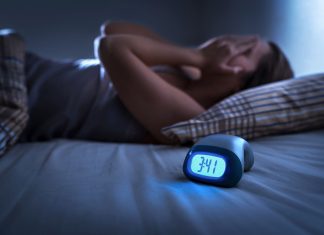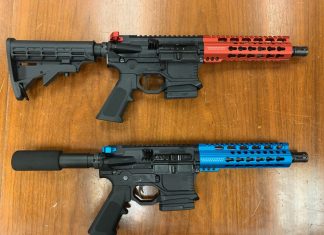
The Sony FX2 was already announced at the end of May this year, which we also covered with a news article and a review of the camera. What has been missing so far (and what you have been asking for!) is to run it through our tests and give you our standard Lab Test. Interested to hear how this camera fares in our tests? Then read on…
In case you missed the detailed specs, see our article here. Also, have a look at Johnnie’s review & mini-documentary here. In essence, we are talking about the following key specs:
- Sensor and Resolution: 33 Megapixel sensor capable of oversampled 4K (7K capture at up to 30P) and 4K 60P (S35 crop).
- Recording Options: 4:2:2 10-bit recording with S-Log3 and S-Cinetone options, and external 16-bit raw video option via HDMI.
- ISO and Dynamic Range: Dual-gain architecture with Base ISO settings of ISO800 and ISO4000 for S-Log3 shooting

Oversampled 4K from a 7K capture sounds quite good, hence we should be able to see clean, detailed 4K video with good noise characteristics. But one thing after the other, let’s look first at the rolling shutter. And as per usual, a big thank you to my colleague Florian, who helped me shoot and analyze this Lab Test.
Rolling Shutter of the Sony FX2
Using our 300Hz strobe light, we get the following result:

27.5ms (less is better) for a full frame 4K capture – ouch! This is a bad result and puts the FX2 at the very bottom of our test rankings. In APS-C crop mode, results get better, and we see 12.8ms.
Dynamic Range of the Sony FX2 at ISO800 and 4000
Let’s first look at a waveform plot of our Xyla21 chart (please head over here first if you are not aware of how we test dynamic range), shooting full frame 4K SGamut3.Cine / Slog3 at ISO800:

We can identify 13 stops above the noise floor, and a 14th inside the noise floor. IMATEST exhibits the following result:

We get 12.4 stops at a signal-to-noise ratio (SNR) of 2, and 13.5 stops at an SNR = 1. These are good but not exceptional results for a full-frame sensor, helped by the 7K downsampling. However, there is additional noise reduction at play, which cannot be turned off, as can be seen in the “Noise spectrum” graph at the lower right-hand side. Amplitudes at higher frequencies quickly drop to values below 0.2. This can also be seen in the waveform graph above; the noise floor looks really clean.
It is important to mention the middle graph in the IMATEST result above: there are additional stops available in the noise floor (above the blue “13.5” line). The latitude test will reveal whether these can be made “usable” by additional post-processing or not.
At ISO4000, the dynamic range drops to 12.1 / 13.2 stops at SNR = 2 / 1. Here, the strength of a dual native ISO sensor is showing up – increasing ISO values from 800 to 4000 does not really penalize dynamic range (in fact, less than half a stop). Very good!
Exposure Latitude Test of the Sony FX2 at ISO800
As mentioned earlier, latitude is the camera’s ability to retain detail and colors when over- or underexposed and pushed back to a base exposure. This test is very revealing, as it pushes every camera to its absolute limits – not just in the highlights but mostly in the shadows.
Besides charts and IMATEST, which provide absolute (objective) mathematically obtained values, this latitude test is our “real world” experiment on how usable the images are using a carefully crafted studio scene.
All latitude shots were done at ISO800 with 4K 10-bit 4:2:2 XAVC compressed codec using SGamut3.Cine / SLog3. Using a color space transform (CST) on the first node to DaVinci Wide Gamut, then an adjustment node, and at the end another CST from DaVinci Wide Gamut to Rec.709, the files were transformed into the Rec.709 space.
Our studio base exposure is (arbitrarily) chosen as having an (ungraded) luma value of 60% on the forehead of our subject on the waveform monitor. In this case, my dear colleague Johnnie:

From here, we can overexpose 4 stops. The pushed back to base image looks like this:

Johnnie’s forehead is still fine, but as usual, on the color checker, some patches are already clipped.
Now, we start to underexpose by closing down the iris of our trusty ZEISS 85mmT1.5 CP2 lens, and from T8 onwards, we are doubling the shutter speed.
At 3 stops under, pushed back to base, we get the following image (we are at 7 stops of exposure latitude):

Noise levels look good, no need for additional noise reduction in post.
At 4 stops under (8 stops of latitude), noise levels are increased, but noise reduction easily cleans this up:


Well, all is seemingly fine, the (moving) images are looking quite good! However, there is a problem that we haven’t seen so far from Sony, and that is some sort of line splitting the image, visible as a horizontal line from the bottom of the white paper on the left, going across the image to the right. We only saw this with other high-resolution camera sensors, like the medium format FUJIFILM GFX100II (Lab Test here).
Now, this phenomenon can happen if the pixel density on a sensor is very high and an electrical charge impacts neighboring pixels (in this case, due to the harsh horizontal transition from the grey background to the white piece of paper – thus the horizontal line).
Hence, although the 4 stops under the image look really good from the noise/recovery perspective, the horizontal issue on the lower end of the picture cannot be ignored. That limits the exposure latitude of the Sony FX2 to 7 stops only.
That’s a shame, as otherwise we can push this image even further, to 9 stops of exposure latitude, without and with noise reduction below:


The noise can be cleaned up again, with the image still looking relatively good! If it were not for the sensor’s horizontal line making the image non-recoverable.
For the record, here is the 10 stops latitude image, hence 6 stops of underexposure, pushed back, as well as the same image using noise reduction in DaVinci Resolve 20.2.2:


 Image credit: CineD
Image credit: CineDI usually like to look at the shadow side of our subject’s face, if skin color is still intact. Well, at 10 stops of latitude, they aren’t anymore.
Hence, if it were not for the sensor’s horizontal line issue, we could attribute 9 stops of exposure latitude capability for the Sony FX2 – using the internal, compressed 10-bit codec! I could imagine that a RAW 12-bit codec would perform even better here, but that is not available (internally) for the Sony Alpha or FX line of cameras.
This result (ignoring the unacceptable sensor horizontal line issue) would be on par with some of the recently tested full-frame consumer cameras, like the Sony A9III (Lab Test here), or the Canon R1 (Lab Test here). The clear leader of the pack is currently the Panasonic LUMIX S1II (Lab Test here), which exhibited a solid 10 stops of exposure latitude, even with some room towards 11 (using internal 12bit ProRes RAW, with DR Boost mode “on”) – on the LUMIX S1II this comes at the expense of an increase of rolling shutter to 27.5ms – the same value we are seeing for the Sony FX2. The recently tested Nikon ZR (Lab Test here) showed 8 stops of exposure latitude.
Hence, the Panasonic S1II has a solid 3 stops better exposure latitude without any horizontal lines or other artefacts when compared to the Sony FX2 at the same rolling shutter!
Summary
Our lab test results show mediocre rolling shutter performance but quite good dynamic range results. The latitude results of 7 stops where sensor horizontal splitting line is still not showing up and 9 stops ignoring the sensor issue, shows that the image pipelines of recent Sony consumer cameras are getting much better recently – the Sony A1 and A9III already exhibited 9 stops with their internal 10-bit codecs whereas the Sony a7IV (Lab Test here) was plagued by large blotches of chroma noise, limiting the latitude to usable 7 stops.
However, the sensor issue cannot be ignored as it is ruining the image, hence Sony needs to fix this asap!
Are you planning to shoot with the Sony FX2, or have you shot already with it? What are your experiences? Let us know in the comments below!







